Multiple people have commented on the trail how tight our summit push is. We didn’t have a third rotation, nor did we get a chance to sleep in camp 3. This is because we were there at the mountain early in the season, but had to sit on our hands for almost ten days due to snow (and then some more snow) and logistics issues. At the same time those of us who got up to camp 3 were fit and strong, ready and eager to go for the summit. Having some more leeway would’ve been nice, but with bad weather incoming, we had limited options. Being a commercial expedition means that we can’t just stay for three more weeks waiting for the next window.
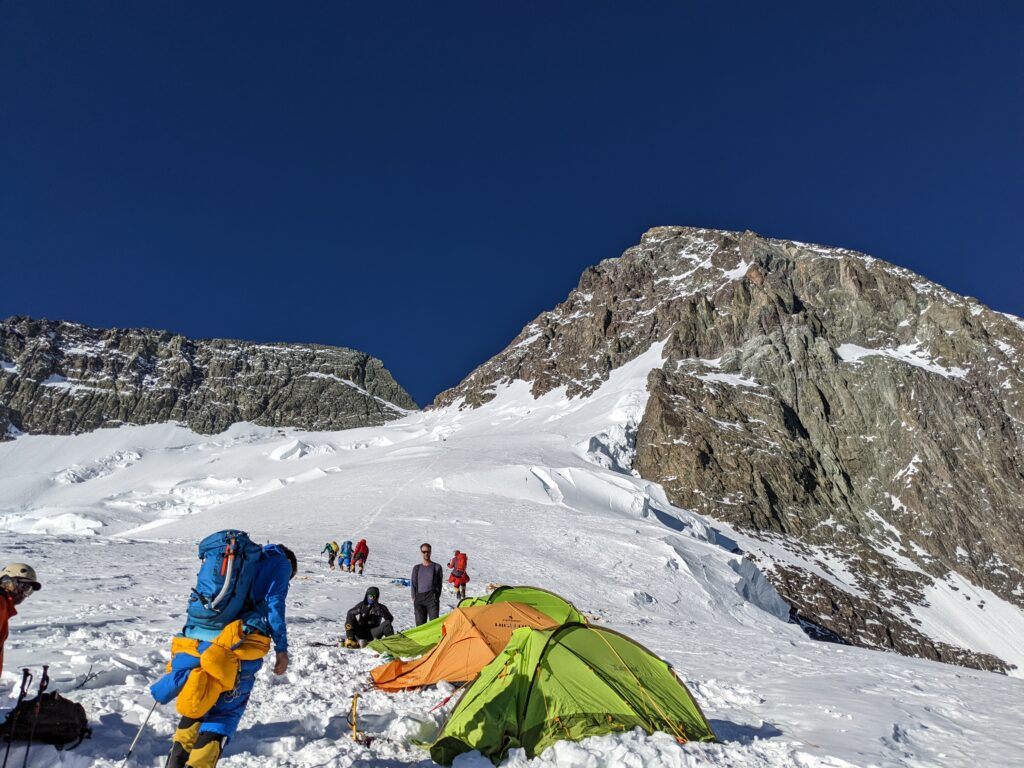
So after resting in camp 3 for 5 hours or so, it was time to start walking. Before 6pm we donned our summit gear: down suits on, super warm gear in backpack. The sun was still up (and would be for the first almost two hours of the push), so it was way too warm to wear everything. Most of us started with the top half of our down suit rolled down on the waist. Then as soon as the sun sank below the mountains behind us, it was time to gear up for the cold, long night. We were projected to reach the summit after sunrise, and honestly it was not a pleasant thought to consider the 10 dark hours to come…
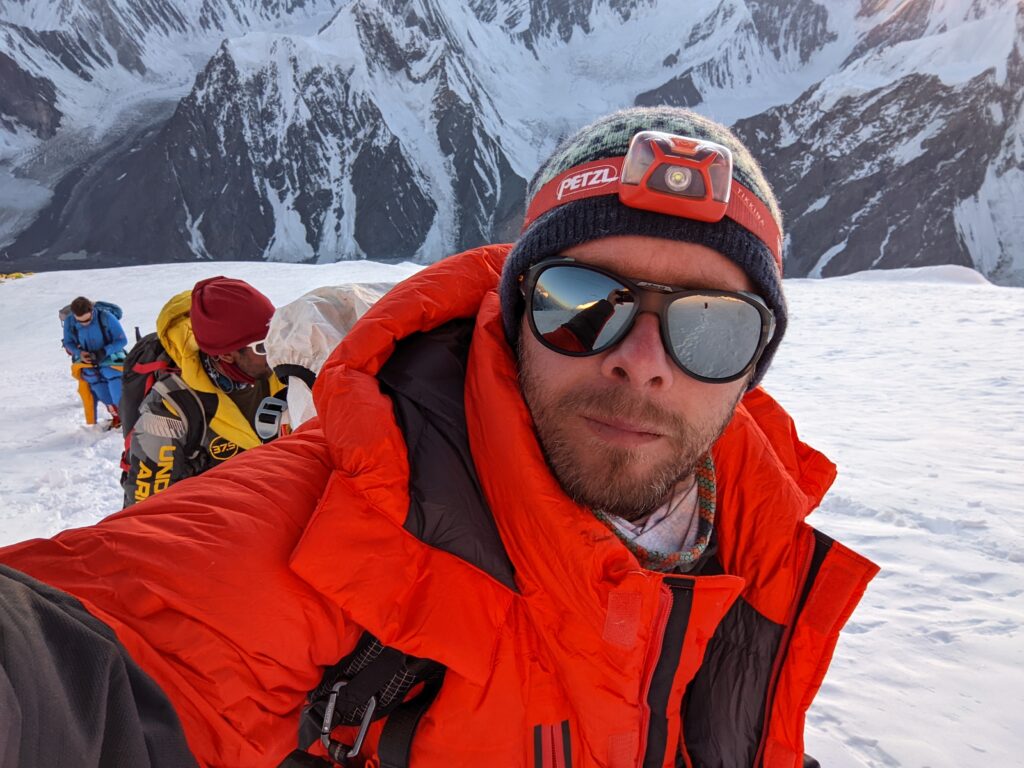
A huge portion of the climb is the long, snowy ascent to the col. This took most of the night. It was very long and quite cold. At the same time it wasn’t that cold, so I only used my Guide gloves and didn’t use my down mittens. Somewhere along the way other teams passed. While I was climbing slowly without oxygen, they moved much faster with oxygen. Most of the snowy ascent was simple: one foot in front of the other, move jumar, repeat.
There were some more challenging bits: at one point the rope was relocated by the Sherpa team for some reason, which turned into a pretty steep climb in waist deep snow. At another point there was a big crevasse, except the whole area was covered in chest deep powder snow, making it an extremely difficult operation to cross. I basically had to swim in the snow and pull myself up on the fixed rope, because there was just no footing. Some of my teammates struggled for like twenty minutes to cross that gap. At that altitude such a struggle is extremely exhausting. It drained me too.
My watch was buried under my layers on my arm so I don’t know what time it was, but in the middle of the night the wind started blowing and it started drizzling snow on and off. The forecast said it’d snow the next day, but I’d hoped it’d be in the afternoon, not literally as soon as the clock struck midnight… It started getting bright as we were reaching the col. Sadly in the light it became obvious that the weather turned cloudy, so there goes our chance of amazing scenery photos from the summit…
Another thing we saw is a queue of people. Apparently to climb out on to the snowy ridge above the col, we’d need to scramble through a super steep and narrow rocky section (some people called it “the chimney”). We’d climb up one by one, which was a slow operation. Personally I didn’t mind lining up: the last hour or so of the snowy climb was even worse, soft snow, so I really appreciated the chance to stand on solid footing and rest while the people in front of me climbed up the gap. I didn’t find the rocky climb itself difficult, it was just the soft now collapsing all the time under every hand and foot move that made it a pain in the neck (especially considering it’s almost at 8000m altitude).
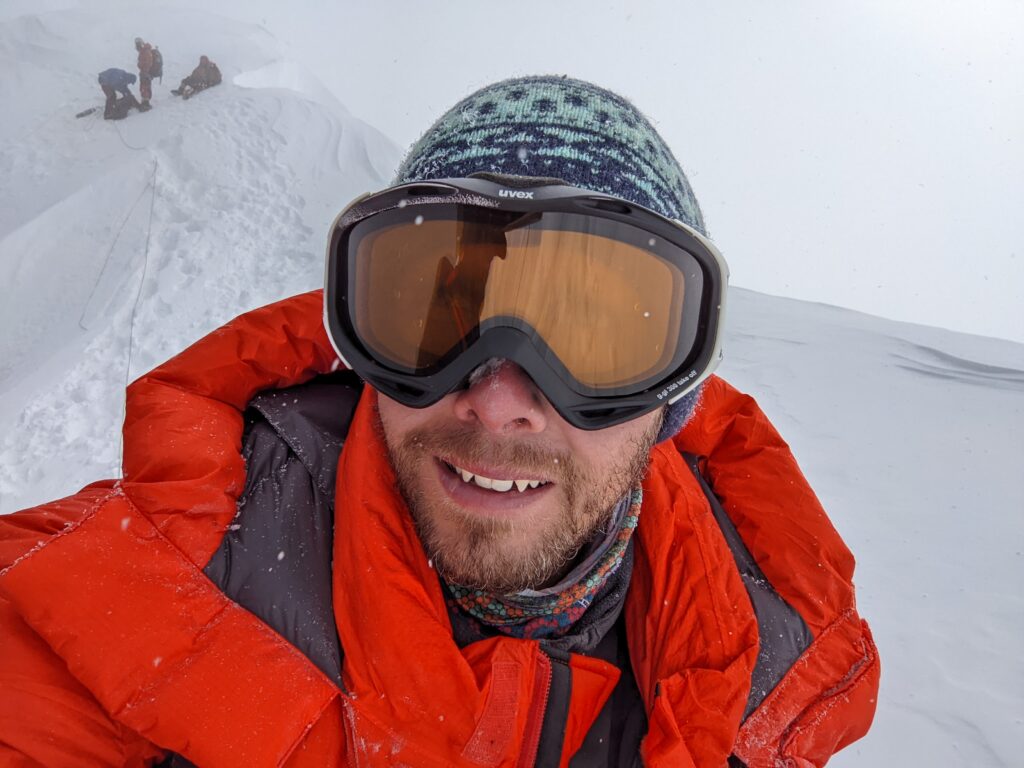
Then I was out on the ridge. I rested for a few minutes to catch my breath, then started walking in the snow following the rest of my team. I reached the top of the next “up” on the ridge, when people from my team were coming the opposite direction. Our guide told me that we are going down. I was shocked since I was just getting back in the mood of walking to the summit, but the situation has apparently changed for the worst.
Due to some issues (a porter turned around with the ropes), the ropes weren’t fixed all the way to the summit. While the first people of our team and some other teams were waiting at the end of the ropes, a local guide fell through a snow cornice on the Chinese side and died. This led our guides and the Sherpa team to agree that turning back is the appropriate decision.
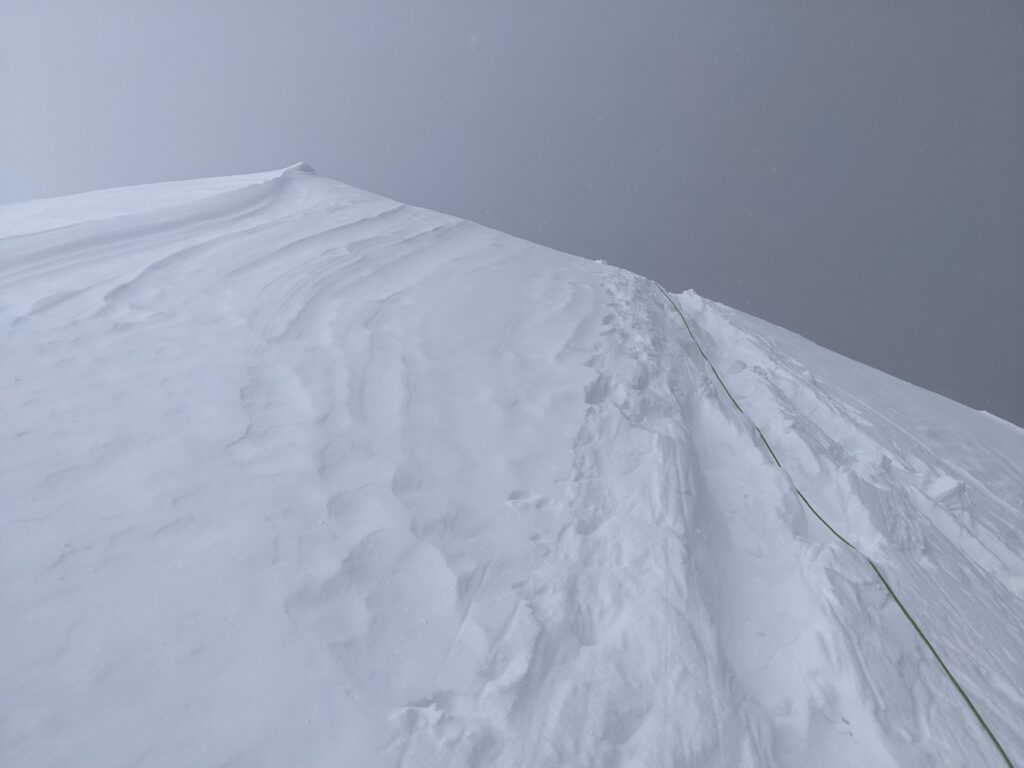
I am very disappointed that we didn’t make it to the summit of Broad Peak, but it’s not the end of the world. It was a very challenging climb for me. I learned a lot about how my body reacts to very high altitude, and I can use this to train better for the next time I go above 8000m (which will likely be Everest, but we’ll see). I also crossed the mighty line of 8000m, reaching 8024m on the ridge (according to the devices of people with me). It’d have been nice to reach the summit too, but with a fatal accident and the issues with fixing ropes for the rest of the way, I’m happy to be alive and safe.

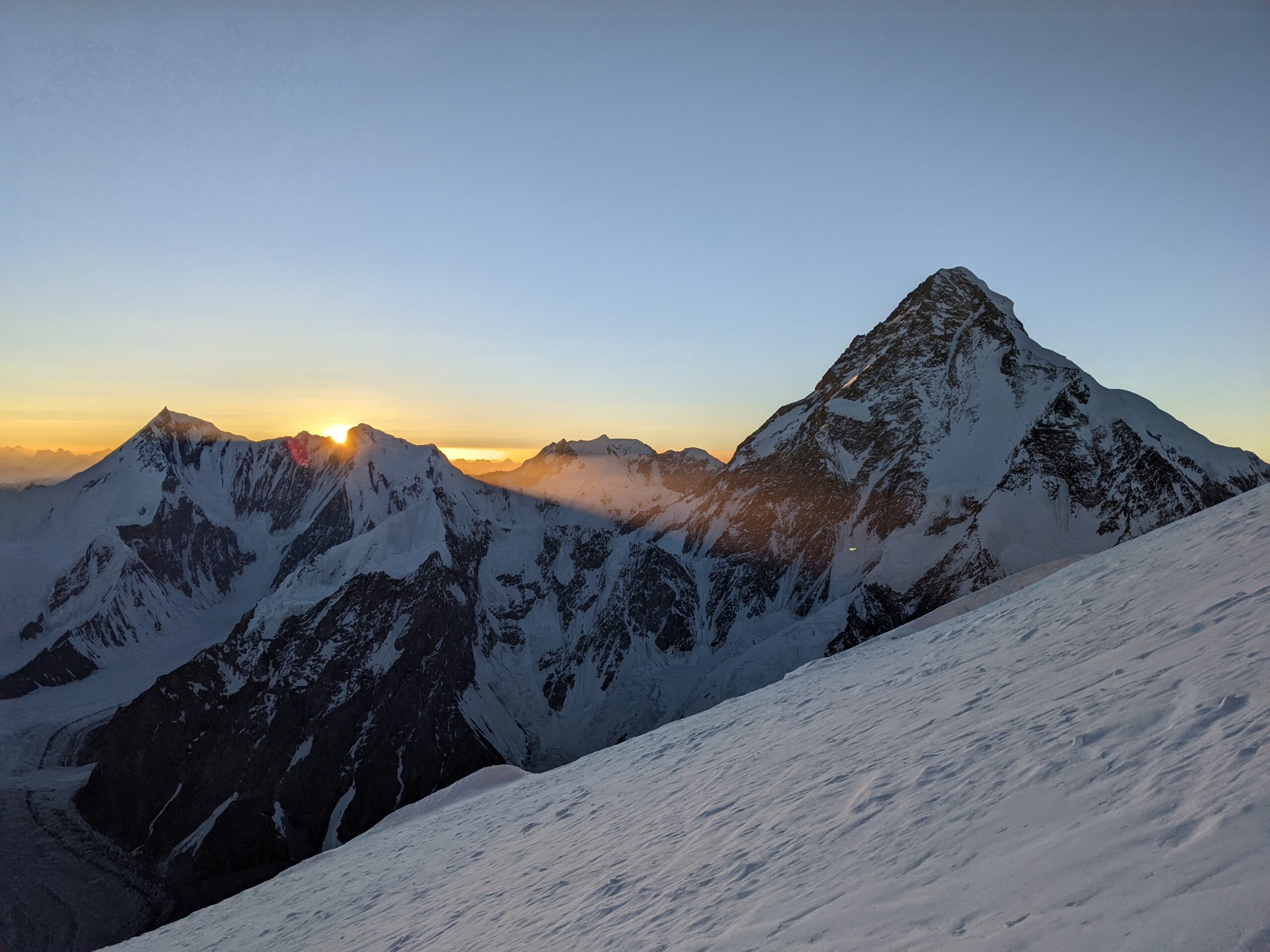
Igen, egyetértünk. A kihívásnak megfeleltél. Rendkívüli, amit véghez vittél! A legfontosabb , hogy le tudtál jönni rendben, s azóta vissza is értél Japánba!